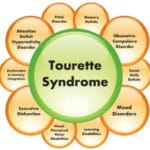Seeing your cat suffer from seizures is distressing, and deciding on the best course of action can be agonizing. This informational guide offers compassionate support and practical advice to help you navigate this difficult journey. We’ll explore seizure management, quality of life assessment, and the factors to consider when making this heartbreaking decision. [https://www.lolaapp.com/when-to-euthanize-a-cat-with-seizures]
Understanding Feline Seizures and Their Impact
Seizures, caused by abnormal electrical activity in the brain, can range from subtle twitches to violent convulsions. While an occasional seizure might not be immediately alarming, frequent or severe episodes can drastically affect a cat’s well-being. Just as repeated, unpredictable seizures would severely impact a human’s quality of life, they can significantly diminish a cat’s comfort and happiness.
What Causes Seizures in Cats?
Several factors can contribute to seizures in cats. These include:
- Epilepsy: This neurological disorder is a common cause of recurrent seizures.
- Head Trauma: Injuries to the head can disrupt brain function and trigger seizures.
- Toxins: Exposure to certain poisons or chemicals can induce seizures.
- Metabolic Disorders: Conditions like low blood sugar (hypoglycemia) or kidney disease can cause seizures.
- Brain Tumors: Tumors within the brain can disrupt normal electrical activity and lead to seizures.
- Infections: Certain infections affecting the brain, such as meningitis or encephalitis, can cause seizures.
Recognizing the Signs
Being able to identify a seizure is crucial for seeking appropriate veterinary care. Common signs include:
- Loss of consciousness
- Muscle spasms, twitching, or rigidity
- Paddling or jerking movements of the limbs
- Excessive drooling or foaming at the mouth
- Unusual vocalizations (crying, meowing, hissing)
- Loss of bladder or bowel control
If your cat displays any of these signs, consult your veterinarian immediately. Early diagnosis and treatment are essential for managing the underlying cause and minimizing the impact on your cat’s quality of life.
Evaluating Your Cat’s Quality of Life
While managing seizures is important, it’s equally crucial to assess your cat’s overall well-being. A quality of life assessment goes beyond simply controlling seizures; it focuses on your cat’s comfort, happiness, and ability to enjoy life. [https://www.lolaapp.com/how-do-you-determine-the-quality-of-life-for-a-cat]
The HHHHHMM Scale: A Practical Tool
The HHHHHMM scale provides a structured way to assess your cat’s quality of life:
- Hurt: Is your cat experiencing pain? (1-10 scale; 10 being no pain)
- Hunger: Are they eating normally? (1-10 scale; 10 being normal appetite)
- Hydration: Are they drinking enough water? (1-10 scale; 10 being well-hydrated)
- Hygiene: Are they able to groom themselves? (1-10 scale; 10 being normal grooming)
- Happiness: Do they still exhibit signs of joy and contentment? (1-10 scale; 10 being happy and engaged)
- Mobility: Can they move around comfortably? (1-10 scale; 10 being normal mobility)
- More Good Days Than Bad: Are they generally having more good days than bad? (1-10 scale; 10 being mostly good days)
A total score of 35 or higher generally indicates an acceptable quality of life, but consult your veterinarian for a professional assessment.
Beyond the Scale: Subtleties Matter
Beyond the HHHHHMM scale, pay close attention to subtle changes in your cat’s behavior:
- Increased Hiding: Are they hiding more frequently or for longer periods?
- Changes in Interaction: Are they less interested in interacting with you or other family members?
- Loss of Interest in Activities: Have they stopped playing with their favorite toys or engaging in activities they previously enjoyed?
- Vocalization and Body Language: Are they vocalizing more (crying, meowing, hissing) or displaying signs of discomfort through their body language (hunched posture, tucked tail)?
These subtle cues can be early indicators of declining quality of life, even if the HHHHHMM score is still relatively high.
Medical Management and Financial Considerations
Several medications can help manage seizures, but they aren’t always a guaranteed cure. Some cats respond well, while others experience minimal improvement or significant side effects. Furthermore, long-term medication can be expensive. Honestly assess your financial situation and discuss the long-term cost of treatment with your veterinarian. [https://www.lolaapp.com/how-long-do-cats-live-after-they-start-having-seizures]
The Difficult Decision: When to Consider Euthanasia
Choosing euthanasia is a deeply personal and heartbreaking decision. There’s no easy answer, and it’s a path filled with grief and uncertainty. Consult your veterinarian throughout this process. They can provide expert medical advice, assess your cat’s quality of life, and discuss all available options.
Consider euthanasia when:
- Seizures are uncontrolled despite medication.
- Your cat’s quality of life is severely diminished, with more bad days than good.
- Your cat is experiencing persistent pain or distress.
- The financial burden of ongoing treatment is unsustainable.
- Cluster seizures or status epilepticus (prolonged seizures) occur, potentially causing irreversible brain damage.
The Euthanasia Process and Coping with Loss
Veterinary euthanasia is a peaceful and humane procedure designed to minimize discomfort. Your veterinarian will administer a sedative to relax your cat, followed by a second injection that gently stops the heart. At-home euthanasia may be available in some areas, offering a more private and comfortable setting for saying goodbye. Discuss this option with your veterinarian.
Coping with the loss of a cherished pet is a painful journey. Allow yourself time to grieve, and don’t hesitate to seek support from pet loss support groups, grief counselors, or friends and family. Creating a memorial, such as a photo album or a special keepsake, can be a meaningful way to honor your cat’s memory.
Choosing euthanasia, when necessary, is an act of profound love and compassion. It’s a way to provide a gentle release from suffering, ensuring your cat’s final moments are peaceful and filled with dignity.
Discover the potent aromas that send roaches scurrying with this insightful guide on what scent do roaches hate.
- Discover Long Black Pepper: Flavor & Health Benefits - April 25, 2025
- Shocking Twists: The Grownup Review: Unreliable Narration - April 25, 2025
- A Quiet Place Book vs Movie: A Deep Dive - April 25, 2025
















